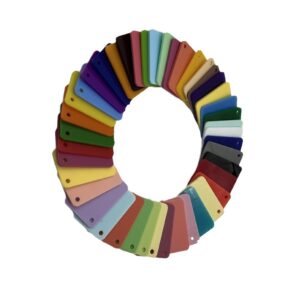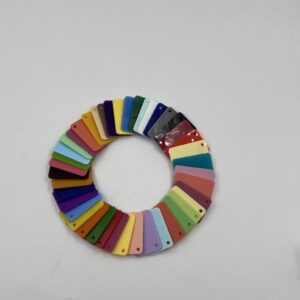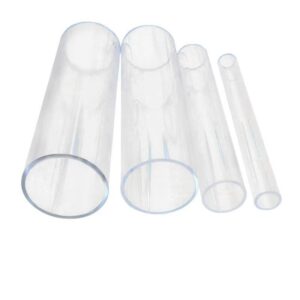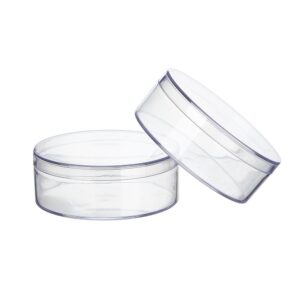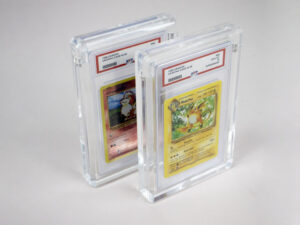Summary
When selecting acrylic thickness for displays and signage, several critical factors come into play, including environmental conditions, longevity, cost, and quality.
Table of Contents
Acrylic, a versatile plastic known for its clarity and durability, has become a preferred choice for a wide range of applications, from indoor displays to outdoor signage.
The selection of acrylic thickness not only influences the structural integrity and visual appeal of the signage but also significantly impacts cost-effectiveness and longevity.
Environmental considerations, such as exposure to temperature fluctuations, humidity, and UV radiation, are paramount in determining the appropriate thickness. Thicker acrylic generally provides greater resilience against harsh weather, making it suitable for outdoor installations.
Furthermore, factors like the likelihood of physical stress from handling or wind also guide the choice between lighter and heavier materials. Longevity is a significant concern; investing in thicker acrylic may reduce the frequency of replacements, thus providing better long-term savings despite the higher initial cost.
Budget constraints are another essential aspect, as thicker acrylic sheets typically command higher prices. Businesses must balance their financial capabilities with their need for durability and aesthetic appeal to make informed decisions that meet their specific project requirements. Additionally, market trends indicate a growing preference for custom solutions that enhance branding and consumer engagement, placing increased demand on businesses to adopt premium materials that align with current consumer expectations.
Controversies surrounding the selection of acrylic thickness often revolve around performance versus cost. While thicker materials generally offer enhanced durability and impact resistance, critics argue that for certain applications, the cost may out- weigh the benefits, leading to discussions about the ideal balance between thickness, performance, and affordability. Ultimately, careful consideration of these factors is essential for businesses aiming to achieve the best possible outcomes for their signage projects.
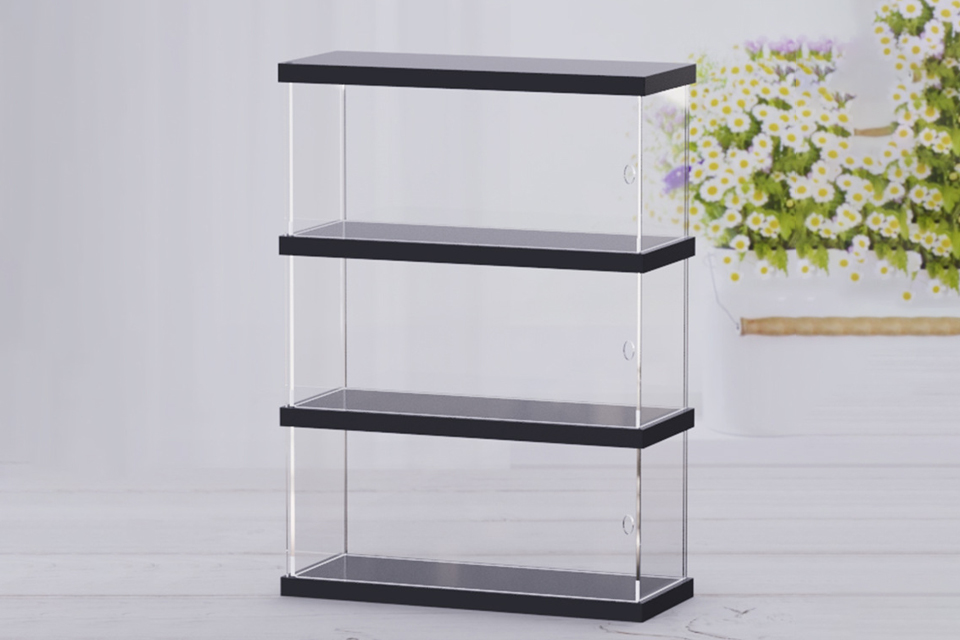
Factors to Consider
When choosing the optimal acrylic thickness for your display or signage, several critical factors must be taken into account to ensure durability, visual appeal, and cost-effectiveness.
Environmental Considerations
Environmental factors such as temperature fluctuations, humidity levels, and expo- sure to sunlight significantly influence the choice of acrylic thickness. For instance, thicker acrylic is generally more resilient to harsh weather conditions and UV radiation, making it suitable for outdoor signage that must endure long-term exposure to the elements. Additionally, assessing the likelihood of wind and the frequency of handling can help determine whether lighter or thicker materials are appropriate for specific applications.
Longevity and Investment
The longevity of the display is another essential aspect to consider. Investing in thicker acrylic may provide a more lasting solution, potentially reducing the need for frequent replacements or repairs. The initial cost of thicker materials can be higher; however, this can be offset by the long-term savings associated with their durability.
Cost and Budget
Budget constraints play a vital role in material selection. Thicker acrylic sheets tend to be more expensive than their thinner counterparts, so it is crucial to balance the desired quality with cost implications. Understanding the specific needs of your project can help in making informed decisions that align with financial goals while still achieving the desired aesthetic and functional results.
Quality and Performance
Quality considerations also extend to the impact strength of the acrylic. Acrylic’s ability to resist fracture under sudden impacts is an important property, particularly for signage that may be subjected to physical stress. Selecting an appropriate thickness based on impact strength can prevent potential failures and ensure that the signage maintains its integrity over time.
Market Trends and Demand
Finally, staying informed about market trends can influence decisions regarding acrylic thickness. As the demand for visually striking and functional signage in- creases, businesses must adapt to current consumer preferences for premium, durable materials that enhance branding efforts. Understanding how acrylic fits within the broader landscape of signage solutions will support more strategic planning and resource allocation.
By considering these factors, businesses can effectively select the right acrylic thickness that meets both practical requirements and aesthetic expectations for their signage projects.
Common Acrylic Thicknesses
Acrylic sheets are available in a wide range of thicknesses, making them suitable for various applications, from lightweight displays to heavy-duty signage. The most common thicknesses range from 1/16″ (1.5 mm) to 4″ (100 mm) or more, with each thickness catering to specific needs and durability requirements.
Standard Thicknesses
Thinner Options (1mm – 3mm)
Thinner acrylic sheets, typically between 1mm and 3mm, are often used for indoor applications such as small photo frames, retail displays, and point-of-sale signage. These options are lightweight and easy to handle, making them suitable for temporary or less demanding setups.
Moderate Thicknesses (1/8″ – 1/4″)
The standard thickness for many acrylic signs is 1/4″ (6 mm), which is ideal for a variety of applications, including tabletops, larger shelves, and outdoor signage. This thickness offers a good balance of strength, transparency, and moderate weight support, making it a versatile choice for many users. A thickness of 1/8″ is also commonly utilized for budget-friendly options that still provide decent quality and durability.
Thicker Options (3/8″ – 1″)
For projects requiring extra durability, thicker acrylic sheets are often used. Thick- nesses of 3/8″ (9.5 mm) are suitable for larger retail displays and protective barriers, while 1/2″ (12 mm) and 3/4″ (18 mm) options are preferred for heavy-duty applications like thicker shelves and countertops. Thicker acrylic sheets, often referred to as acrylic blocks when they reach 1″ (25 mm) or more, are ideal for structural projects that require maximum strength and impact resistance.
Specialized Thicknesses for High-End Applications
In specialized projects such as jewelry showcases and museum displays, acrylic sheets of 1-1/2″ (38 mm) and above are commonly used to ensure both aesthetic appeal and durability. The thickest options, ranging from 2″ (50 mm) to 4″ (100mm), are reserved for custom art installations and architectural designs, where visual impact and structural integrity are crucial. Choosing the right thickness of acrylic not only influences the overall performance and appearance of the display but also impacts cost and durability. For most applications, selecting a thicker material results in enhanced quality and longevity, although it does come with a higher price point.

Advantages of Different Thicknesses
Standard Thickness
The standard thickness for acrylic displays is 0.080 inches, which strikes a balance between cost and quality. This thickness is generally sufficient for many applications, providing adequate durability and resistance to wear while maintaining a reasonable price point. It is often recommended for those looking for a versatile solution without compromising on visual appeal and functionality.
Increased Durability
Choosing a greater thickness, such as 0.098 inches or 1/8 inch, enhances the structural integrity of the display. Thicker acrylic is less prone to scratching, stress cracking, or deformation under load, which can result in longer-lasting signage. While these thicker options typically come with a higher initial cost, they may prove more cost-effective over time by reducing the need for frequent replacements.
Customization and Aesthetic Appeal
Thicker acrylic sheets allow for more intricate designs and can accommodate com- plex features such as lighting or 3D effects. Options like 1/4 inch thickness provide additional depth, enhancing visual impact and the overall aesthetic of the display. This can be particularly beneficial for branding and advertising purposes, where effective communication of the message is crucial.
Economies of Scale
For businesses ordering custom acrylic signage in bulk, opting for thicker materials can lead to significant cost savings. The unit price often decreases with larger orders, allowing companies to invest in higher-quality displays without dramatically increasing their budget. This strategy not only improves the durability of the signage but also supports brand consistency and recognition through cohesive, high-quality displays.
Lifespan Considerations
Investing in thicker acrylic is often viewed as a longer-term strategy. Thinner materials may require more frequent replacements due to damage or wear, potentially resulting in higher lifecycle costs despite their lower initial purchase price. By selecting a thicker option, businesses can achieve greater longevity and a better return on investment over time.
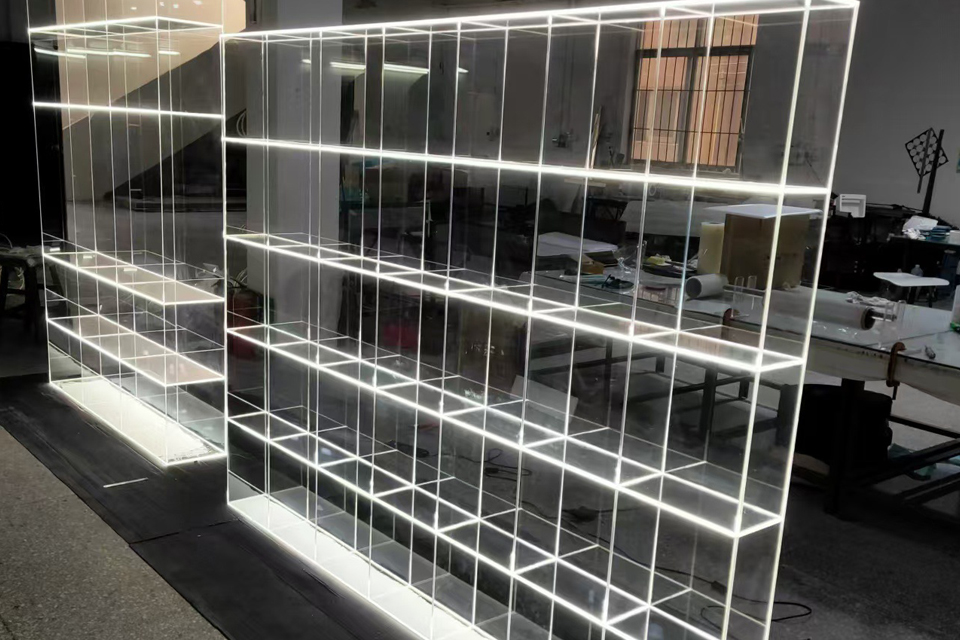
Comparison with Other Materials
When selecting materials for displays or signage, acrylic often stands out due to its unique properties. However, it’s essential to compare it with other common materials to understand its advantages and disadvantages fully.
Acrylic vs. Glass
Acrylic is frequently employed as a substitute for traditional glass, offering several significant advantages. While glass is known for its classic appeal and has been utilized for centuries, acrylic provides superior strength and impact resistance, making it less prone to breakage compared to glass. Acrylic sheets can transmit 93% of visible light, achieving clarity similar to that of glass, but weigh only half as much, enhancing ease of handling and installation. Furthermore, acrylic is weatherproof and UV-resistant, making it well-suited for outdoor applications where glass might suffer from environmental damage.
Acrylic vs. Polycarbonate
Polycarbonate is another alternative to acrylic, known for its exceptional durability. It is up to 50 times stronger than acrylic and is virtually unbreakable, making it a preferred choice for high-impact applications, such as safety glazing and bulletproof glass. However, polycarbonate tends to be more expensive than acrylic due to its strength and longevity. In scenarios where lightweight and optical clarity are crucial, acrylic remains a popular choice; yet, when maximum strength and resilience against severe impacts are required, polycarbonate might be the better option.
Acrylic vs. Other Plastics
Compared to other plastics, acrylic boasts superior optical clarity and resistance to environmental factors. While various plastics may offer different strengths and flexibility, acrylic maintains glass-like qualities, providing brilliant clarity while remaining lightweight. It can be easily fabricated and shaped for a wide range of applications, making it a versatile choice across numerous industries. However, the specific needs of a project, such as budget constraints and desired physical properties, should guide the selection of acrylic over other plastic materials.
Installation and Maintenance
Proper installation and maintenance of acrylic signage are crucial to ensuring both the aesthetic appeal and durability of the display. This section outlines the key steps and considerations involved in the installation process, as well as ongoing maintenance practices to keep your acrylic signs in optimal condition.
Installation
Choosing the Installation Method
Before installing an acrylic sign, it is essential to determine how it will be displayed options include wall-mounted, freestanding, or hanging displays. Selecting the appropriate mounting hardware tailored to the chosen installation method is vital for a secure setup.
Installation Steps
Preparation: Gather necessary tools such as a power drill, screws, anchors, a level, and masking tape for marking positions. Placement: Arrange the letters or components on the intended surface to finalize the layout and spacing. Use masking tape or non-permanent markers to mark the positions. For wall-mounted signs, use anchors and screws to attach the sign securely to the wall. For freestanding signs, ensure the base is stable and level. Follow specific installation instructions provided for the mounting hardware to ensure a professional appearance.
Maintenance
To prolong the life of acrylic signage and maintain its visual appeal, regular maintenance is necessary.
Cleaning
Routine Cleaning: Use a mild soap and water solution along with a soft, non-abrasive cloth or sponge to clean the acrylic surface. This prevents the accumulation of dirt, dust, and residues. Avoid Harsh Chemicals: Refrain from using abrasive cleaners or harsh chemicals that could scratch or damage the acrylic surface. Use microfiber cloths to effectively remove dust without causing harm.
Inspections
Regular Checks: Periodically inspect the sign for any loose fasteners, particularly for 3D or channel letters. If loose components are found, tighten them to ensure the sign remains securely attached.
Illumination Maintenance: For illuminated signs, regularly check the lighting elements to ensure they are functioning correctly and replace any non-working bulbs as needed. By adhering to these installation and maintenance practices, the performance and appearance of acrylic signage can be optimized, ensuring that it remains a valuable asset for display and branding purposes.
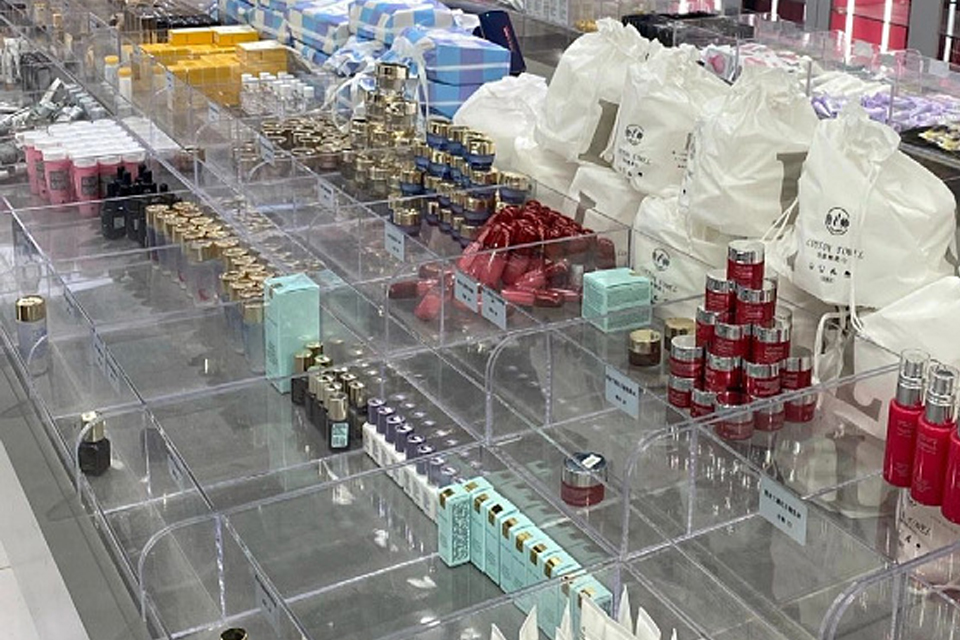
Market Trends and Customer Preferences
The market for acrylic sheets, particularly in the light and signage sector, has been significantly influenced by evolving customer preferences and emerging trends. One of the most notable trends is the growing demand for customized acrylic solutions that cater to specific display needs. Retailers are increasingly looking for acrylic sheets that not only enhance the visual appeal of their products but also provide functional benefits such as durability and cost-effectiveness.
Regional Dynamics
In the United States, the demand for light and signage acrylic sheets varies across regions, with each area exhibiting distinct consumer behaviors and preferences. For instance, the Northeast and West regions have shown higher growth rates due to increased urbanization and commercial infrastructure projects. This demand is further fueled by a growing number of hotel development projects and large-scale infrastructure initiatives, creating opportunities for acrylic signage.
Influence of Thickness Selection
When selecting acrylic sheets, retailers are particularly concerned with thickness. The default thickness for many applications is commonly set at 1/4 inch, which is considered sufficient for most uses. However, thicker acrylic options are preferred for applications requiring enhanced structural integrity and visual impact. Retailers recognize that choosing the right thickness can lead to reduced replacement frequency and improved long-term performance, thereby positively affecting their bottom line.
Consumer Preferences and Product Customization
The trend towards customization has also driven market growth, as consumers increasingly seek unique and tailored solutions for their displays. Companies that can provide personalized acrylic sheet options, whether in terms of size, color, or thickness, are likely to gain a competitive advantage in the marketplace. Additionally, the emergence of major players in the industry, who are committed to innovation and customer satisfaction, further shapes the competitive landscape and aligns with consumer demand for high-quality products.





